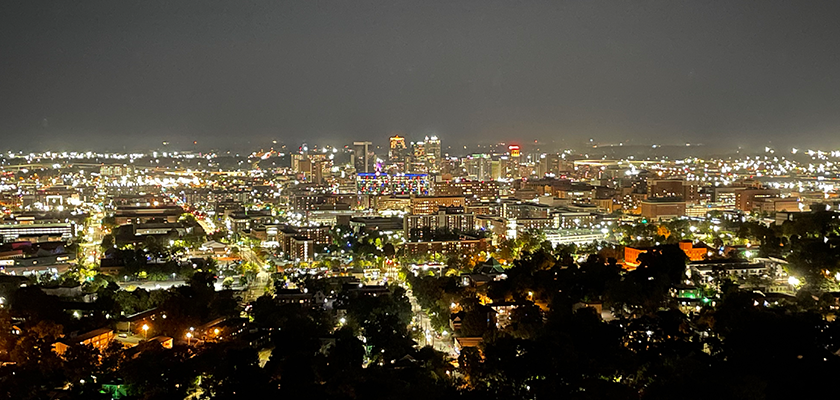Alabama’s largest metro area, Birmingham, was officially incorporated by the Alabama Legislature on this day in 1871.
Earlier that year, investors organized the Elyton Land Company with the intent to purchase land for the formation of a new city.
Elyton’s organizers, who were mostly bankers, planters and railroad entrepreneurs, chose Jones Valley because it was where railroad companies intended to intersect the new Alabama & Chattanooga and South & North Alabama railroads.

Jones Valley is one of the southernmost valleys of the Appalachian mountain chain. Mostly veterans of the battle between Gen. Andrew Jackson and the Creeks at Horseshoe Bend, early settlers reached the area in 1815, establishing the settlements such as Elyton and Jonesboro.
Jones Valley was also home to significant deposits of three raw materials used in the steel-making process: iron ore, coal and limestone. In fact, it’s the only place in the world where significant quantities of all three resources can be found in such close proximity.
The company raised $200,000, which they used to establish public utilities and construct streets. The land went up for sale that summer.
Elyton wanted the city to become an industrial capital in the South, which had been debilitated by the Civil War less than a decade prior. Its organizers chose the name “Birmingham” to associate the city with the industrial city by the same name in central England.
After the reconstruction legislature gave Birmingham its official status as a city, Alabama Gov. Robert Lindsay appointed Robert Henley as Birmingham’s first mayor. Two years later, James R. Powell, who had been president of the Elyton Land Company, was elected mayor. Powell urged voters in Jefferson County, mostly newly enfranchised black voters, to elect Birmingham as the county seat.
Over the next few years, the stock market crashed, and there was an outbreak of cholera. Nevertheless, the city continued to develop shortly after.
Truman H. Aldrich, James W. Sloss and Henry F. DeBardeleben helped open the Pratt mines in 1978. DeBardelaben then teamed up with Thomas T. Hillman to construct the Alice Furnaces, which would produce large quantities of pig iron. Sloss constructed another set of blast furnaces in 1881, and many mineral and railroad companies invested in the city over the next two decades.

After 1900, Birmingham earned the nickname “The Magic City” due to the rapid growth of the iron and steel industry.

Regardless, President Herbert Hoover named Birmingham “the hardest hit city in the nation” after the stock market crash in 1929 forced thousands of residents out of work.
The city became the center of the civil rights movement through the mid-20th century. Martin Luther King, Jr. wrote his famous “Letter from the Birmingham Jail” while imprisoned there in 1963. The bombing of the Sixteenth Street Baptist Church, which occurred in the city that same year and killed four African American girls, prompted the passage of the Civil Rights Act of 1964.
During the 1970s, Birmingham made several developments, including the University of Alabama Birmingham (UAB), which later became a major medical and research center, and the construction of the Birmingham Jefferson Convention Center.
However, for most of the late 20th century, Birmingham’s population declined while the surrounding suburban incorporated communities of Hoover, Vestavia Hills, Mountainbrook, Homewood, Alabaster and Gardendale grew.
According to the World Population Review, Birmingham’s population, though it increased between 2018 and 2019, has been declining since the 1960s. In 1960, there were as many as 341,000 people living in the city. Now, there are only 198,400.
Now, Birmingham is no longer the largest city in Alabama, a title that has been won over by Hunstville. However, the Birmingham metro area, including the independent suburbs, remains the largest metro area in the state.
To connect with the author of this story, or to comment, email will.blakely@1819news.com or find him on Twitter and Facebook.
Don’t miss out! Subscribe to our newsletter and get our top stories every weekday morning.










